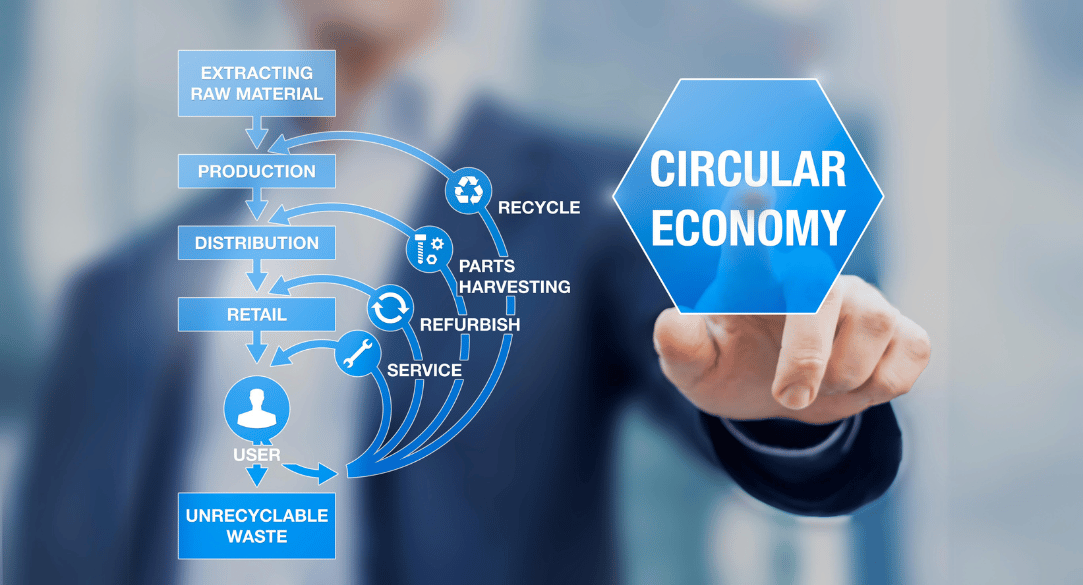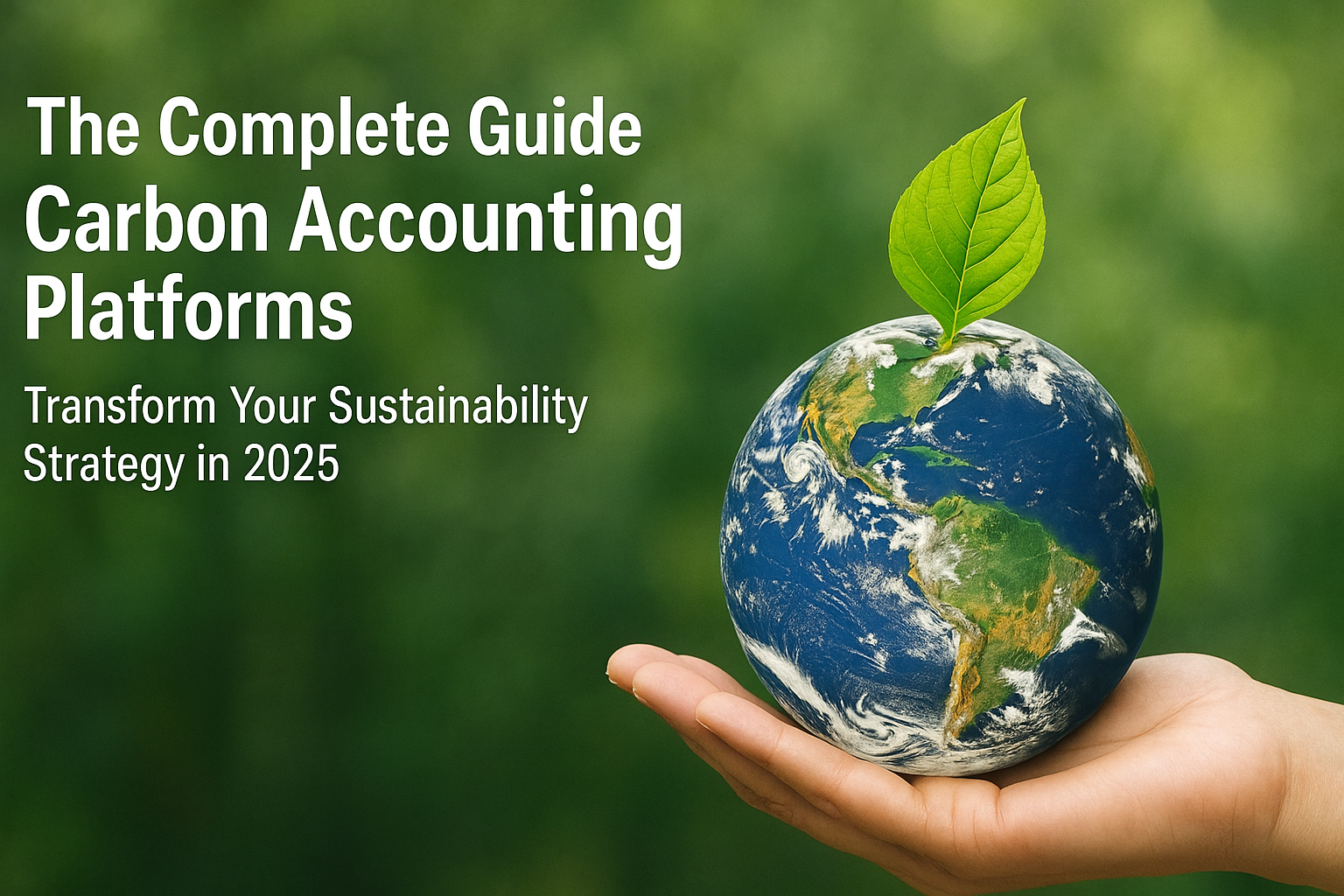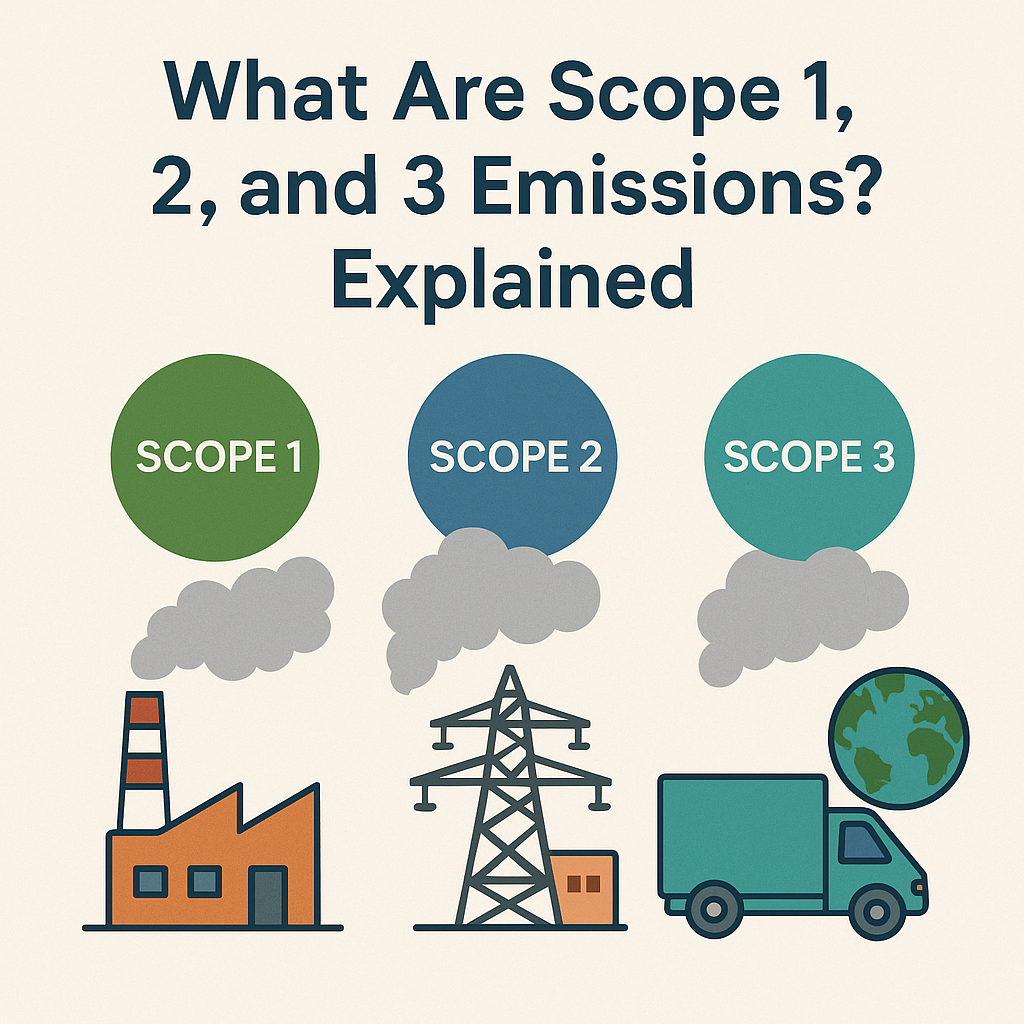Reducing carbon emissions across your entire value chain is not just a noble environmental goal; it's a strategic imperative for modern businesses. Companies that embark on this journey not only contribute to the global fight against climate change but also position themselves for long-term competitiveness and regulatory compliance.
Importance of Universal Net-Zero Emission Action
In the ever-evolving landscape of sustainability, there exists a profound imperative – one that transcends borders, industries, and ideologies. It is a call to action, not born of critique, but rather ignited by the boundless potential for transformation. The urgency of achieving net-zero emissions across the global enterprise value chain has emerged as the paramount challenge of our era, and it beckons with both a sense of responsibility and unprecedented opportunity.
As the world grapples with the pressing reality of climate change, the role of corporations in this narrative cannot be overstated. Enterprises, with their expansive value chains spanning continents and sectors, bear a unique mantle of responsibility. However, this responsibility is not a burden; it is an invitation to pioneer a new era of sustainability, innovation, and profitability.
The essence of our collective journey towards net-zero emissions hinges on the recognition of carbon emissions as a shared challenge. Intrinsic to this paradigm shift is the understanding that emissions, like the tendrils of a vast ecosystem, are interconnected. It is not solely about reducing emissions within the confines of corporate headquarters; it is about venturing beyond organizational boundaries and mitigating emissions embedded in every link of the value chain.
In this intricate web of suppliers, producers, and distributors, opportunities abound. The reduction of carbon emissions is not an isolated endeavor but an integrative one, guided by a spirit of collaboration, innovation, and purpose. It is a journey wherein every company, every actor, every stakeholder plays an indispensable role in achieving our shared goal – a world where net-zero emissions are not a lofty ideal but an attainable reality.
At Carbon Analytics, we stand at the forefront of this transformative journey. We are not merely observers but enablers, empowering companies to embrace their pivotal role in driving carbon reduction across their value chains. Our cutting-edge solutions, forged through data-driven insights and advanced analytics, illuminate the path towards sustainability.
As you read this, the imperative to act reverberates across industries. The urgency is palpable, the need is undeniable, and the opportunity is boundless. We invite companies, large and small, to embark on this transformative voyage with us. Together, we can recalibrate the trajectory of carbon emissions, fostering a world where sustainability and profitability walk hand in hand.
Join us in the pursuit of a net-zero future. Harness the power of data, innovation, and collaboration to reduce carbon emissions within your value chain. Take the decisive step towards a world where carbon neutrality is not a distant goal but a present reality. The time to act is now, and the promise of a sustainable future beckons. Together, let's make net-zero emissions not just an aspiration but a shared achievement.

Global Climate Agreements & Value Chain Impact
Two crucial global agreements stand at the forefront of the battle against climate change, bearing significant implications for value chains: the Paris Agreement and the Scope 3 emissions framework. The Paris Agreement, operating under the United Nations Framework Convention on Climate Change (UNFCCC), marks a global commitment to curbing global warming to well below 2 degrees Celsius above pre-industrial levels. This commitment necessitates a rigorous approach to emissions reduction, particularly within value chains. Here's where Scope 3 emissions come into play.
Scope 3 emissions reporting, an integral part of the Greenhouse Gas Protocol, provides a systematic methodology for organizations to quantify, manage, and decrease emissions throughout their value chains. It categorizes emissions into 15 distinct sources, underlining the importance of scrutinising emissions beyond a company's immediate operations. Emphasising Scope 3 emissions reduction is not just a matter of compliance; it's a strategic imperative. It not only aligns companies with global climate objectives but also unlocks opportunities for enhanced efficiency and sustainable growth. Companies that grasp the significance of this category are not only contributing to a more sustainable world but are also positioning themselves for long-term success.
Carbon footprint: Scope 1, Scope 2 and Scope 3 emissions
Scope 1 Emissions:
Scope 1 emissions are the most direct and immediate greenhouse gas emissions originating from a company's own operations. This includes emissions from sources like on-site fuel combustion, industrial processes, and company-owned vehicles. These emissions are within the company's control and can be directly managed and reduced through operational changes and efficiency improvements.
Scope 2 Emissions:
Scope 2 emissions are associated with the energy a company consumes but is produced off-site. These typically result from purchased electricity, heat, or steam. They are considered indirect emissions because while the company does not produce the energy, its consumption contributes to these emissions. Companies can reduce Scope 2 emissions by transitioning to renewable energy sources or improving energy efficiency.
Scope 3 Emissions:
Scope 3 emissions encompass a broader range of indirect emissions that occur in a company's value chain but are beyond its immediate control. These include emissions from sources like supply chain activities, transportation of goods, and product use by customers. Reducing Scope 3 emissions requires collaboration with suppliers, optimising logistics, and designing products for a lower carbon impact.
Unveiling the Imperative
The imperative of addressing value chain carbon emissions is no longer a matter of choice for businesses; it's a strategic necessity.
Regulatory Landscape
One of the primary drivers for addressing value chain carbon emissions is the ever-evolving regulatory landscape. Governments worldwide are imposing stringent carbon reduction targets and emissions reporting requirements. Failure to comply can lead to hefty fines, reputational damage, and even market access restrictions.
As of 2021, over 80 countries have implemented or are planning to implement carbon pricing mechanisms, making it evident that regulatory pressures are intensifying.
Investor Expectations
Investors are increasingly factoring in environmental, social, and governance (ESG) performance when making investment decisions. In fact, ESG-focused investments are growing at a compound annual rate of 25%, highlighting the financial importance of addressing carbon emissions.
According to a survey by Morgan Stanley, 85% of institutional investors believe that ESG factors have a material impact on investment performance.
Consumer Demand
Today's consumers are more environmentally conscious than ever before. They favor companies that demonstrate commitment to sustainability. A Carbon Trust study found that 66% of consumers are willing to pay a premium for products with lower carbon footprints.
Ignoring value chain emissions can lead to alienating a significant portion of your customer base.
Supply Chain Resilience
Value chain emissions reduction is also essential for supply chain resilience. Climate change-related disruptions can affect the availability and cost of raw materials, transportation, and energy sources. By addressing carbon emissions within the value chain, businesses can mitigate these risks and ensure operational continuity.
In 2020, the World Economic Forum's Global Risks Report listed climate action failure and extreme weather events as two of the top five global risks.
Cost Savings
Reducing carbon emissions within the value chain can lead to substantial cost savings. Energy efficiency measures, waste reduction, and sustainable sourcing can all contribute to a leaner and more cost-effective operation.
Organisations that implement carbon reduction strategies can achieve an average 20% reduction in energy costs.
Competitive Advantage
Finally, addressing value chain emissions can provide a competitive advantage. Companies that proactively reduce their carbon footprint can differentiate themselves in the market, attract top talent, and build stronger partnerships with suppliers and customers.
60% of consumers prefer products and services from companies with a positive impact on society and the environment.

Practical Steps to Reducing Value Chain Emissions
Introduction: Reducing emissions in your value chain is not only a responsible business practice but also a strategic move to meet sustainability goals and gain a competitive edge. In this guide, we'll provide you with practical steps to effectively reduce value chain emissions while avoiding jargon and focusing on actionable strategies. Let's get started.
Step 1: Achieve Better Value Chain Transparency
- Why it matters: Transparency is the foundation for any emission reduction strategy. It helps you understand where emissions occur and where you can make the most significant impact.
- Actionable steps:
- Map your entire value chain to identify key players and processes.
- Collaborate with suppliers and partners to gather emissions data.
- Use tools like Carbon Analytics to visualize and analyze your carbon footprint.
Step 2: Audit Your Products and Conduct Life Cycle Assessments (LCAs)
- Why it matters: LCAs provide insights into the environmental impact of your products, helping you prioritize emissions reduction efforts.
- Actionable steps:
- Conduct LCAs for your key products or services.
- Identify the hotspots in your product's life cycle.
- Collaborate with experts to find opportunities for reduction.
Step 3: Identify Efficiencies and Optimization Opportunities
- Why it matters: Efficiency improvements can lead to substantial emissions reductions.
- Actionable steps:
- Analyze your operations and supply chain for energy-saving opportunities.
- Invest in technology upgrades for better resource utilization.
- Train employees to identify and act on efficiency opportunities.
Step 4: Set Better Value Chain Standards
- Why it matters: Establishing clear standards helps align your partners and suppliers with your emissions reduction goals.
- Actionable steps:
- Develop and communicate sustainability standards for your suppliers.
- Collaborate with suppliers to help them meet these standards.
- Regularly assess and adjust standards based on industry best practices.
Step 5: Adopt and Implement Closed-Loop and Circular Economy Models
- Why it matters: Closed-loop systems minimize waste and emissions by reusing resources.
- Actionable steps:
- Explore circular economy opportunities within your value chain.
- Encourage product design that promotes reusability and recycling.
- Establish a take-back program for products at the end of their life cycle.
Step 6: Uplevel Your Value Chain ESG Data
- Why it matters: Enhanced ESG data provides stakeholders with a clear view of your sustainability efforts.
- Actionable steps:
- Invest in robust data collection and management systems.
- Regularly update and verify your ESG data.
- Share this data with investors, customers, and partners through transparent reporting.
Step 7: Communicate Your Value Chain Carbon Reduction Progress and Impact
- Why it matters: Transparent communication builds trust and showcases your commitment to reducing emissions.
- Actionable steps:
- Develop a clear and engaging communication strategy.
- Share success stories, challenges, and lessons learned.
- Engage with stakeholders through various channels, such as reports, social media, and events.
Reducing emissions in your value chain is a journey that requires dedication, collaboration, and ongoing effort. By following these practical steps and leveraging tools like Carbon Analytics, you can make meaningful progress in reducing your carbon footprint while demonstrating your commitment to sustainability to your stakeholders. Remember, the journey towards a more sustainable future is a shared responsibility, and your efforts can inspire positive change throughout the industry.
Top Points to Remember
- Strategic Imperative: Reducing value chain carbon emissions is crucial for competitiveness, regulatory compliance, and global climate action.
- Global Responsibility: Businesses play a vital role in combating climate change by addressing emissions across their value chains.
- Interconnected Emissions: Emissions throughout the value chain are interconnected; it's not just about reducing emissions at headquarters.
- Pressing Factors: Regulatory pressures, investor expectations, consumer demand, and supply chain resilience drive the need for emissions reduction.
- Cost Savings: Efficiency measures can lead to significant cost savings, and emissions reduction provides a competitive edge.
- Practical Steps: Follow practical steps like transparency, life cycle assessments, efficiency improvements, sustainability standards, circular economy models, ESG data enhancement, and transparent communication to reduce value chain emissions.
Carbon Analytics: Your Partner for Sustainable Value Chain Transformation
Carbon Analytics specializes in empowering businesses to reduce carbon emissions across their entire value chain. Our comprehensive suite of tools and expertise is designed to guide your organization toward a sustainable, net-zero emissions future. Discover the transformative potential of Carbon Analytics by scheduling a demo with us today!
About Carbon Analytics
Embarking on the journey to achieve net-zero emissions starts with accurate carbon accounting, and Carbon Analytics is your trusted partner in this endeavor. We provide the means to calculate your business's emissions and identify critical areas for improvement. Our team of sustainability experts collaborates with you to leverage this data for crafting a tailored emissions reduction plan and a strategic climate investment strategy for emissions that persist.
By choosing Carbon Analytics, you ensure your business remains in compliance, gains a competitive edge, and is well-prepared to reach net-zero emissions goals. Take the first step towards sustainable value chain transformation by booking a free demo with Carbon Analytics today.



